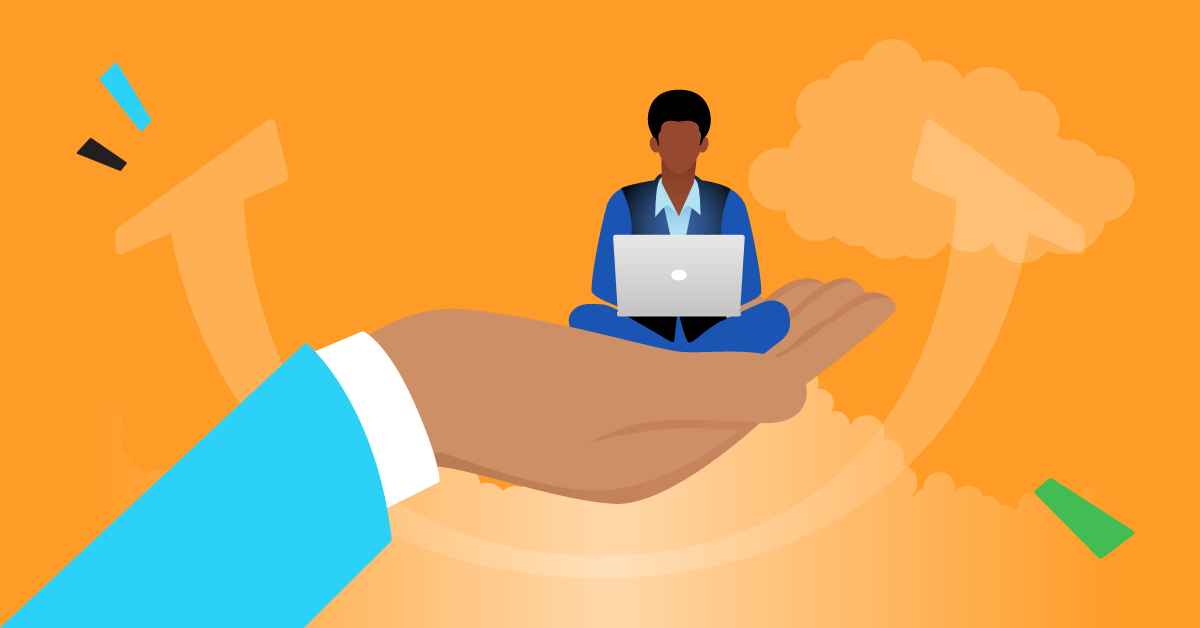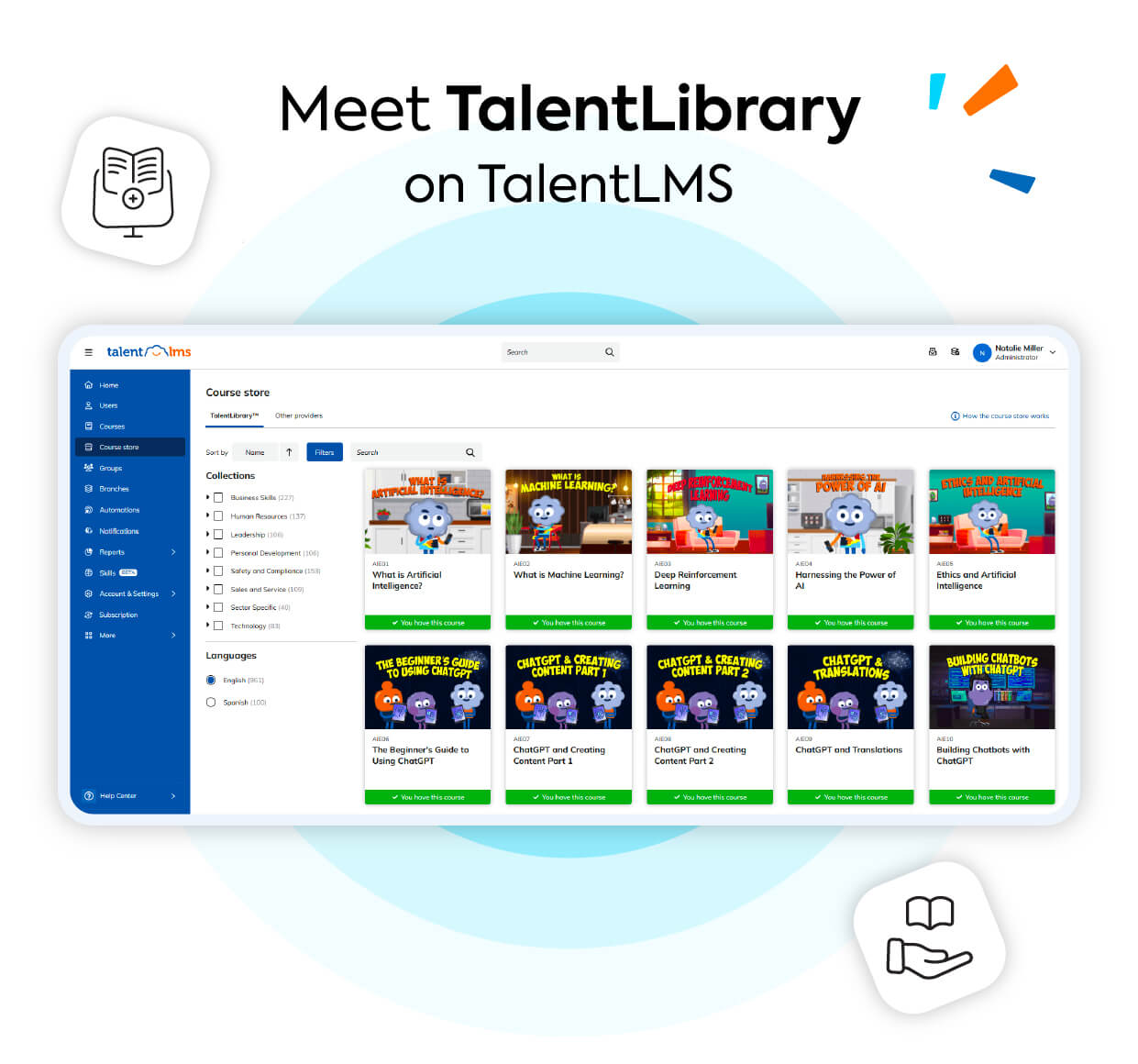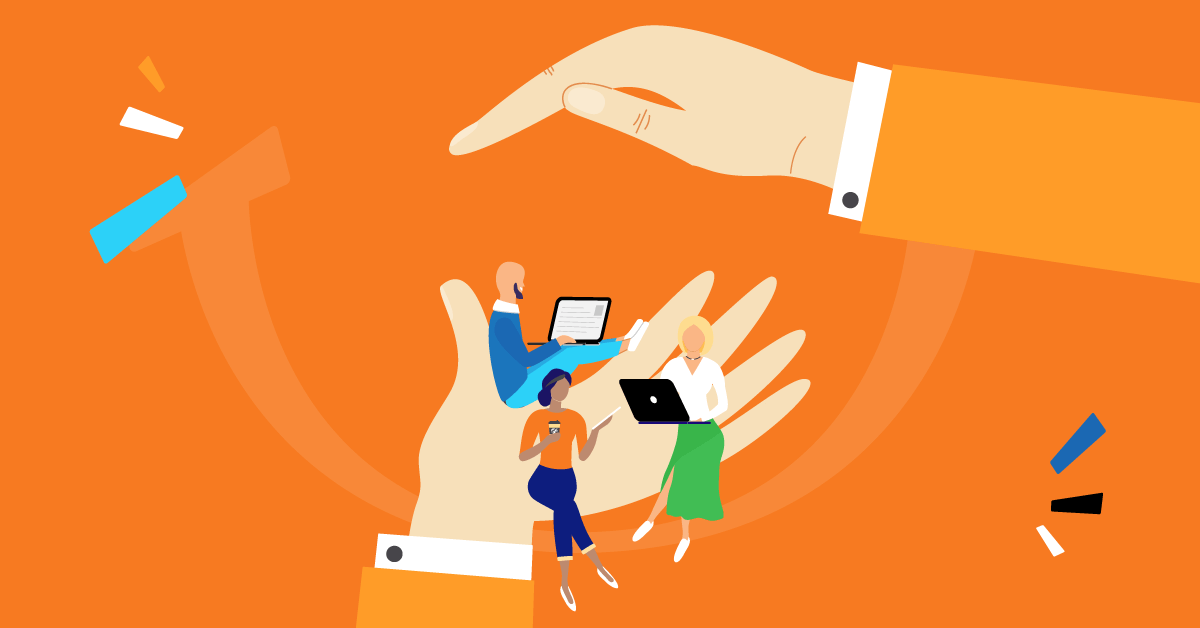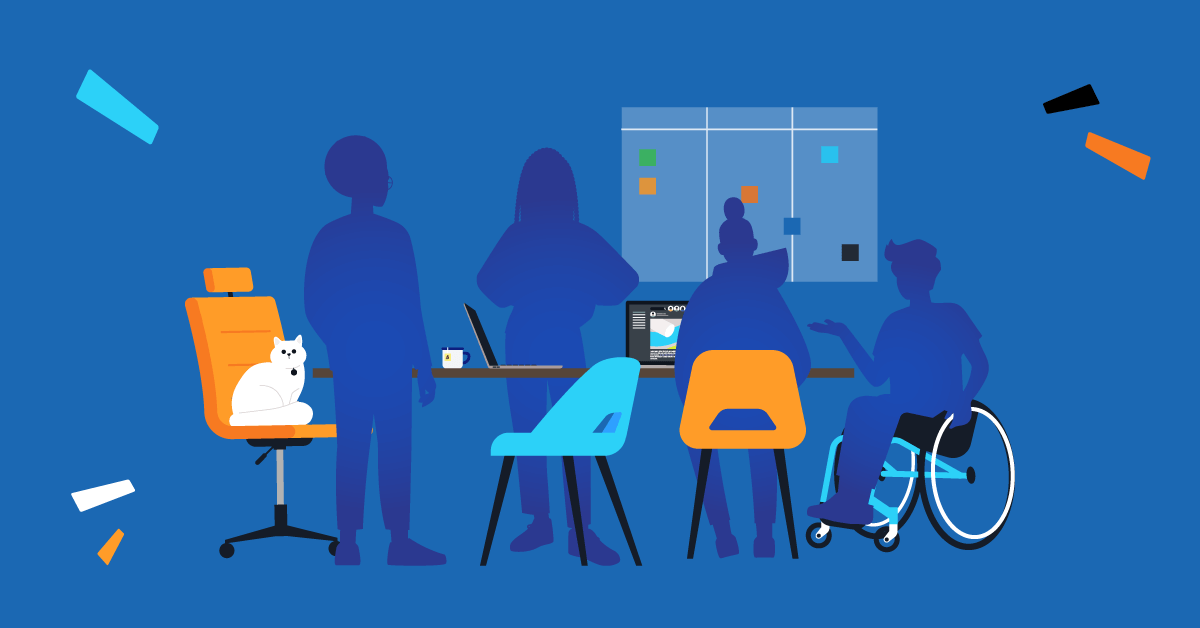In today’s fast-paced and diverse workplace, inclusion training is more than a good idea. It’s a necessity.
It often fails, though, because it doesn’t go beyond the basics.
Dr. Poornima Luthra shares her thoughts on training for inclusion and tackling unconscious bias in Empathy and Inclusivity in the Workplace, from TalentLMS’ podcast series, Keep it Simple.
She comments “Taking people to the edge of a cliff without giving them a parachute is the biggest pitfall in unconscious bias training—it builds awareness but lacks actionable solutions for dealing with bias when it arises.”
Meaning, being able to recognize unconscious bias is one thing. But you also need practical strategies to tackle bias in daily situations.
So, how do you make active inclusion in the workplace a reality, not just a policy? And how can you spark real, positive change, not just raise awareness?
The answer is with training focused on strategies and solutions.
If you’ve got a brain, you’re biased
Unconscious biases are like invisible threads. They are woven into our minds from the tapestry of our experiences and environment.
From a young age, our brains start to categorize the world. We learn from family, culture, media, and personal experiences. These mental shortcuts help us navigate the complex world more efficiently.
But they also have a dark side. They can lead to snap judgments or assumptions about people based on stereotypes rather than individual merit.
Dr. Luthra shares her own experience of this on the podcast. Her older son was telling them about a guest speaker from Google that they had at school who was speaking about data. She immediately wondered, without reflecting on it, whether this person was a dad from school.
Then, she adds “I had a very clear cookie cutter of who the person was who was working in Google in data and was speaking about data. It was definitely a man, and it was an Indian man. It was very clear. I knew which city he came from, what educational institution he went to, what his wife looked like, what languages he spoke, and what food he enjoyed.”
The impact of these biases in the workplace can be profound.

Decision-making
Unconscious biases can influence decision-making processes within organizations. These biases may lead managers to make choices that aren’t based on objective criteria. But rather on ingrained stereotypes or preferences.
For instance, during hiring, promotion, or project assignments, a manager might unknowingly favor candidates who share their own background or views. And overlook talent that could bring new solutions and views. This is known as affinity bias. Its impact is a lack of diversity in teams and leadership.
Teamwork
Sometimes, individuals search for or interpret information in a way that confirms their preconceptions. This is known as confirmation bias. And it hinders effective collaboration and communication within teams.
How? Team members are marginalized based on gender, ethnicity, or age. And their abilities, contributions, and potential are overlooked.
This affects employees’ morale and career development. And divides teams, which negatively affects productivity and innovation.
Workplace culture
The effect of unconscious biases on decision-making and teamwork shapes workplace culture. Meaning, actively addressing and mitigating unconscious biases can foster an inclusive culture.
A culture where biases go unchecked is likely to be one where diversity is not truly valued or leveraged. This can stifle creativity and innovation. A homogenous culture is less likely to challenge the status quo or think outside the box.
It can also lead to a toxic workplace environment. Employees will feel undervalued, leading to increased turnover rates, lower job satisfaction, and poor company reputation.
An ally for action: Why is active inclusion important in the workplace?
Imagine a workplace where everyone feels valued, heard, and empowered. When it comes to active inclusion, that’s the goal. But to achieve this, simply believing in diversity, or talking about bias, won’t cut it. Every employee needs to be an ally for action.
Dr. Luthra explains that allyship means actively supporting marginalized groups to foster inclusion. She gives an example of how most people are well-intentioned when it comes to supporting diversity. That said, they remain passive allies. They acknowledge it at events (for example, on International Women’s Day or at Pride parades).
But they don’t act further. Not because they don’t want to. But because they don’t know how to. Which lets bias and discrimination continue. And this is why it’s crucial to move from passive to active allyship.
So, why doesn’t awareness alone cut it? And how can people be more than bystanders in the fight for a fairer, more welcoming work environment? And why? Let’s dig a little deeper.
Beyond awareness
Understanding that we all have unconscious biases is crucial in fostering active inclusion. But it’s only the first step.
Without action, this awareness doesn’t change the status quo. It’s like realizing you’re lost but not asking for directions. Awareness by itself doesn’t prevent biased decisions or build a more inclusive culture. It’s the action that initiates change.
Being an active ally
So, what does it mean to be an active ally?
An active ally speaks up, steps in, and supports initiatives that promote diversity and inclusion. They do the work. They educate themselves, listen to diverse voices, challenge discriminatory behaviors, and advocate for policies that support equity. Their focus is on making a commitment to be part of the solution every single day.
The impact of active allyship
Active allyship transforms workplaces. It creates environments where everyone feels valued and empowered to contribute their best.
When people actively support each other, they break down barriers, foster innovation, and build stronger teams. Plus, being an active ally isn’t just good for others. It enriches our own lives with deeper understanding and connections.
From standing on the sidelines to standing out for change
Training for inclusion is critical in transforming individuals into active allies. It gives them the tools they need to adopt behaviors that support diversity, equity, and inclusion (DEI).
Let’s explore practical training techniques and strategies for fostering these qualities:
Developing soft skills
Building soft skills is essential for fostering an inclusive workplace. It equips individuals with the ability to understand, respect, and value diverse perspectives and experiences. Which leads to a more equitable and collaborative environment.
What personal qualities and soft skills are essential for becoming active allies for active inclusion?
- Curiosity: Employees learn to be more open-minded when learning about different cultures, perspectives, and experiences.
- Active listening: Individuals learn to concentrate, understand, respond, and remember what is being said in conversations. Especially those related to DEI topics.
- Empathy: Learners discover how to understand and share the feelings of others, fostering a deeper sense of empathy.
- Growth mindset: People explore how basic abilities can be developed through dedication and hard work. Which is crucial for overcoming biases.
- Communication: Employees learn how to properly convey their messages. And how to listen to others, emphasizing respectful and inclusive language.
Training techniques and strategies
To effectively nurture active allies for inclusion, employing dynamic training techniques and strategies is key.
Here’s a look at some impactful approaches:
- Interactive activities: Plan workshops where participants use role-playing to practice and understand different perspectives. This hands-on approach helps in recognizing unconscious biases and learning how to address them.
- Immersive learning experiences: Create scenarios where participants are placed in situations or environments different from their own. This fosters understanding and empathy.
- Mentorship programs: Pair individuals with colleagues from diverse backgrounds or with a strong understanding of DEI principles. This form of personalized learning encourages the application of inclusive behaviors.
- Feedback sessions: Implement sessions where participants can reflect on their learning, discuss challenges, and receive constructive feedback on their progress in becoming active allies.
Why leadership plays an important role in active inclusion
What role does leadership play in fostering active inclusion and diversity within an organization?
Leaders are the architects of organizational culture. They shape it with every decision, action, and priority they set.
Which is why the role of leadership in training for inclusion can’t be overstated. It’s what helps cultivate a culture that genuinely values DEI.
Signaling DEI priority
If your leaders are present and engaged in DEI training, it sends a powerful message to all your employees. Which is that these topics aren’t just HR initiatives; they’re central to your company’s mission and values.
This visible commitment boosts buy-in from your workforce. It establishes an expectation for behavior and interactions. And makes it clear that DEI is a non-negotiable component of your organization’s identity.
Encouraging a top-down approach
Leadership participation fosters a top-down approach to active inclusion. Simply put, it encourages other managers to follow suit. This approach not only accelerates the adoption of DEI practices. It also ensures they’re reflected in every aspect of your organization’s ecosystem.
Equipping leaders with tools
When leaders directly engage with DEI training, they get the knowledge and skills they need. This equips them to embody the principles of active allyship. Understanding the nuances of bias, privilege, and systemic inequality enables leaders to navigate complex workplace dynamics more effectively.
They can set examples through their actions, demonstrating how to challenge biases, support underrepresented groups, and advocate for change. This leadership model paves the way for a more inclusive culture. It demonstrates that active allyship is the responsibility of everyone. Especially those in positions of power.
Talking the talk: Why everyone needs to take the lead
Leadership is also about influence. Not just titles. And anyone who can change how others think or act is considered a leader. Here’s where communication comes in.
Dr. Luthra says that how we communicate is a simple but strong way to make the workplace more inclusive.
When we use words that include everyone, we’re showing how to be better allies. (For example, using words without assuming someone’s gender or background.)

And this builds a work culture that values everyone.
Making small changes in daily communication may seem insignificant. But it sets a standard. And it inspires others to do the same. The result? Everyone becomes a leader in making the workplace more inclusive.






